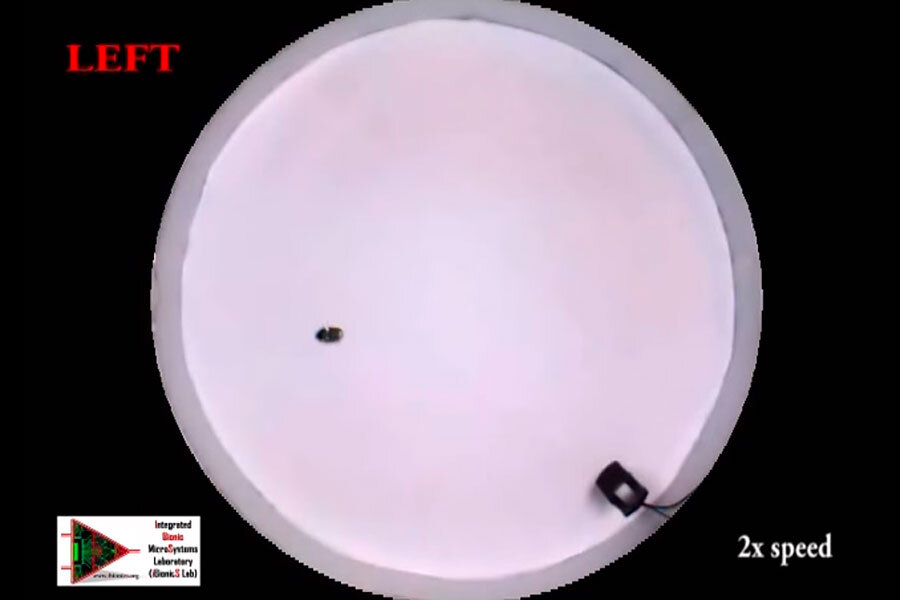The latest in search-and-rescue tech: cyborg cockroaches
Loading...
The latest in search-and-rescue technology could fit in the palm of your hand, although it is just as likely to try to scurry out of it.
Researchers at North Carolina State University have developed cyborg cockroaches to help locate survivors in the aftermath of a disaster. Equipped with backpacks loaded with tiny microphones and trackers, the bugs could be used to help lead rescuers to victims, according to a press release from NCSU.
NPR reports that the cockroaches can be controlled by tiny electrodes inserted into an area of the insect's brain responsible for controlling the front legs.
The researchers have also developed technology that can be used as an “invisible fence” to keep the cockroaches in the disaster area.
“I’m always open to additional assets at a rubble site,” says Harry Oakes SAR Coordinator for International K-9 Search and Rescue Services of Longview, Washington in an interview. “I was in Turkey back in ’99 after the quake and we found people alive 10 days later. But even though you locate the victim it can still take hours and hours to get to them. If cockroaches can get us there faster, then I’m all for it.”
Roger D. Kamm, a professor of biological and mechanical engineering at MIT, says in an interview, “This is very exciting work that’s being done. There are a lot of biological systems we can’t reproduce. Just the cockroach’s ability to easily and quickly crawl up walls, into confined spaces is hard to reproduce in a robotic creation.”
The research team has created two types of customized backpacks using microphones. One type of 'biobot,' as the cybernetically augmented bugs are known, has a single microphone that can capture relatively high-resolution sound from any direction to be wirelessly transmitted to first responders, according to the release. The second type is equipped with an array of three directional microphones to detect the sound's source. The system worked well during laboratory testing, the researchers say.
The project is funded by National Science Foundation CyberPhysical Systems Program and has a long-term goal of both mapping disaster areas and pinpointing survivors.
The researchers is also working with collaborator Mihail Sichitiu of NCSU to develop the next generation of biobot networking and localization or “invisible fence” technology.
This is significant because it can be used to keep biobots at a disaster site and to keep the biobots within range of each other so that they can be used as a reliable mobile wireless network.
“Of course a cockroach will never replace a search-and-rescue dog or have the same capabilities the dog has,” Says Mr. Oakes. “On the other hand, the dogs can’t do what the cockroaches can do.
“I think we’re going to see more interface and integration between biology and robotics as a result of this type of research,” Mr. Kamm says. “Being able to redesign living organisms to turn into biological robots we can control is very exciting.”








